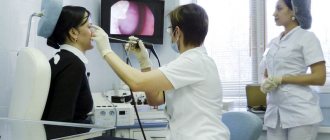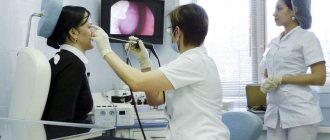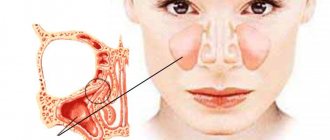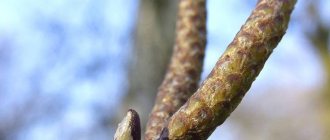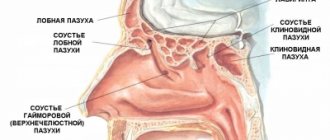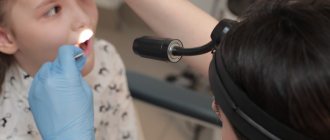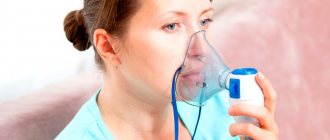Before considering effective non-surgical methods for treating sinusitis, it is necessary to understand how it occurs.
Typically, with this disease, nasal breathing is difficult, headaches are observed, and purulent nasal discharge is present. How to choose between non-surgical methods of treating sinusitis and punctures? Let's figure it out.
Typically, the standard treatment of acute sinusitis refers to punctures, that is, punctures of the maxillary sinuses, and subsequent antibiotic therapy. Of course, both punctures and the use of antibiotics raise reasonable concerns among patients. Punctures are quite painful, and the use of antibiotics is associated with rather unpleasant restrictions.
For antibiotics to be truly effective for sinusitis, they usually need to be injected rather than taken in tablet form. Punctures do not in all cases lead to a positive result. Often, the patient leaves the doctor with persistent problems, that is, punctures are ineffective.
Types of sinusitis
Depending on the causes of the disease, mechanism and course of the disease, sinusitis is divided into several types or types.
Acute sinusitis
Acute sinusitis is a rapidly developing form of the disease, which, as a rule, is a consequence of acute respiratory diseases: ARVI, colds, the common runny nose, as well as inflammation of the roots of the front teeth of the upper jaw. The mechanism of the disease is the same: pathogens penetrate the maxillary sinuses through thin channels that connect the sinuses to the nose, or through the bone tissue of the jaw. The body begins to produce lymphocytes - special cells of the immune system that are designed to neutralize dangerous microorganisms. Mucus accumulates in the sinuses, which flows through the channels into the nose. If mucus clogs the ducts, it accumulates in the sinuses and begins to put pressure on the walls, causing even greater inflammation.
If the mucus leaves the site of inflammation without obstruction, the disease passes without complications. When the canals are blocked, problems begin:
- elevated temperature;
- breathing becomes difficult;
- when touched, the upper jaw around the nose hurts;
- a person sleeps poorly at night;
- feeling unwell, tired;
- performance decreases;
- the face swells.
Chronic sinusitis
In some cases, inflammation of the maxillary sinuses takes a chronic form: as a rule, this occurs after one or more attempts to treat acute sinusitis. Chronic inflammation of the paranasal sinuses may be caused by the presence of other diseases not related to the ENT organs or traumatic factors. Symptoms of inflammation periodically subside and worsen:
- body temperature rises, not exceeding 38 degrees;
- headaches appear and disappear when tilting the head;
- snot of yellow, yellow-green shades flows from the nose;
- the sense of smell deteriorates - the patient does not smell food;
- the face constantly swells;
- Tears come for no reason and conjunctivitis appears.
Purulent sinusitis
Purulent sinusitis is a complication caused by incorrect treatment or an attempt to self-treat acute forms of the disease. The cause of the disease is most often colds, infectious and viral diseases that a person undertreated or suffered “on his feet.” Purulent sinusitis is caused by accumulations of pathogenic bacteria in the maxillary sinuses. The main danger of this disease is the possibility of damage to the bone tissues of the face, which will seriously complicate treatment and prolong it indefinitely.
Bilateral sinusitis
The most difficult and treatable is bilateral sinusitis - simultaneous inflammation of the mucous membrane in the sinuses located on both sides of the nose. The cause of the disease is most often microorganisms that have penetrated into the sinuses from the oral cavity or respiratory system, affected by pathogens - bacteria, fungi and viruses. More often, bilateral sinusitis manifests itself in an acute form, becoming chronic if treatment is ineffective.
The disease is easily diagnosed by the following signs:
- intoxication of the whole body: a sharp increase in temperature, vomiting, pain in joints and muscles;
- lethargy, apathy, loss of ability to work;
- swelling of the face on both sides;
- soreness of the maxillary sinus area when palpated with fingers;
- increased lacrimation;
- releasing a large amount of snot.
Allergic sinusitis
Allergic sinusitis affects people who suffer from a negative reaction of the body's immune system to external irritants: pollen, dust, poplar fluff and even water. The allergen, penetrating into the paranasal sinuses, causes increased production of leukocytes, which, accumulating in the sinuses, clog the channels and inflame the mucous membrane.
Allergic sinusitis is characterized by:
- headache;
- weakness and apathy;
- pain in the area of the eyes and cheekbones;
- temperature increase;
- nasal obstruction.
Catarrhal sinusitis
Catarrhal sinusitis most often affects children and adolescents. It occurs after harmful bacteria enter the maxillary sinuses, when the mucous membranes of the nasal cavity swell. This narrows the channel through which mucus is excreted. Catarrhal sinusitis is the mildest form of inflammation, which with timely treatment goes away quickly and without consequences. People who have had catarrhal sinusitis note:
- lack of appetite;
- swelling of the eyelids, face;
- change in snot color;
- increased temperature;
- the appearance of headaches and a feeling of pressure around the nose;
- aches throughout the body, muscle pain.
Polypous sinusitis
Polypous sinusitis develops when polyps appear in the nasal sinuses, blocking the channels for removing mucus from the sinuses. Sinus polyps are abnormal, painful growths that appear on the mucous membrane as a result of rapid cell division. Doctors have not worked out the exact cause of the formation of polyps, believing that they appear as a result of the influence of one or more negative factors: heredity, trauma, viral or bacteriological diseases.
Patients complain of signs characteristic of most forms of sinusitis: fever, snot discharge; deterioration of general condition, dullness of taste and smell, nasal congestion.
Odontogenic sinusitis
Dental diseases affect the health of the ENT organs; evidence of this is odontogenic sinusitis, which appears in people who do not take care of their teeth. The roots of the 4th, 5th and 6th teeth in the upper jaw are very close to the walls of the maxillary sinuses or grow inward. Dental disease, affecting the dental crown and root, infects the mucous membrane of the sinuses, “releasing” pus into the sinuses. Mucus, accumulating in the sinus, clogs the canal - sinusitis develops.
Forms of the disease
Based on the type of pathogen, the following types of sinusitis are distinguished:
- viral;
- fungal;
- allergic;
- bacterial;
- traumatic.
According to the nature of the inflammatory process:
- acute sinusitis;
- chronic sinusitis.
Based on the nature of the clinical picture, the following forms of sinusitis are distinguished:
- catarrhal;
- polyposis;
- purulent;
- atrophic;
- hyperplastic;
- mixed (several forms of the disease are combined at the same time).
Causes of occurrence
The maxillary sinuses are a natural barrier against infections, pathogens and other negative factors that are in the air. Therefore, the main cause of sinusitis is the contact of infections, allergens, and fungi on the mucous membrane. Inflammatory agents can enter the maxillary sinuses through the blood.
A weakening of the human immune system can worsen the functioning of the mucous membranes: the reasons for the release of an insufficient number of leukocytes are constant colds, acute respiratory viral infections, rhinitis, allergic reactions, and improper treatment of diseases.
A person may be a carrier of staphylococcus - a type of harmful bacterium that may not cause harm to its owner for some time: the immune system successfully copes with it. As soon as the immune defense weakens, staphylococcus begins its destructive work.
The main causes of sinusitis include:
- injuries of the maxillary sinuses that disrupt the mucous membrane;
- illiterate or incomplete cure of a runny nose or cold;
- entry of pathogenic bacteria, fungi and viruses into the nasopharynx;
- burns of the mucous membranes of the sinuses by harmful chemicals;
- insufficient air humidification in enclosed spaces;
- past infectious diseases: acute respiratory infections, influenza;
- abnormal structure of the nasopharynx organs;
- physical trauma to the nasal septum;
- the appearance of neoplasms (adenoids, polyps);
- allergic reactions to various irritants;
- diseases HIV, AIDS, tuberculosis;
- some treatments (radiation exposure);
- the appearance of malignant and benign tumors.
Medical fact: one of the main causes of sinusitis is the frequent use of drops to treat rhinitis. As a result of excessively frequent use of the medicine in the sinuses, a large amount of mucus is formed in the maxillary sinuses, causing blockage of the channels into the nasal cavity.
How to blow your nose correctly
To get rid of accumulated mucus, the patient needs to promptly clear the nose of the “snot” that interferes with breathing. In order to improve the release of mucus, doctors recommend using special products, including those of plant origin. They cause reflex hypersecretion, relieve swelling, as a result, the secretions drain better and the nose is cleared. Sea water helps clear the nose of accumulated mucus. It softens crusts and thins mucus, helping it to freely exit the sinuses.
Symptoms
The appearance of several alarming symptoms separately or simultaneously should alert the patient: triggering the development of sinusitis means losing the best time for treatment and accruing many complications, including inflammation of the lining of the brain.
Pain
Painful sensations most often appear in the area of the nose and around it: in the morning the pain is weaker, and by night it intensifies. The pain becomes increasingly intense: the intensity varies, from several days to a couple of hours. After some time, the pain ceases to be felt in specific places and a headache appears.
Temperature
An increase in temperature is the body’s reaction to the appearance of pathogens that have caused a phenomenon such as general intoxication - poisoning of the body. In the acute form of the disease, the temperature rises to 38 degrees and above. The chronic course of sinusitis may not cause a high temperature or its increase to 37-37.8 degrees. The temperature indicator is influenced by the state of the immune system, the characteristics of the body and the age of the patient, and the presence of other diseases.
Snot
A clear sign of sinusitis is copious discharge of snot. At different stages of the disease, snot may change color:
- at the initial stage of the disease, white snot is released - when an infection occurs, the mucous membrane actively produces a protective liquid - white or translucent mucus;
- the development of inflammation causes the release of green snot, which will tell the doctor that sinusitis is in the acute stage;
- adding a yellow tint to the green color indicates the appearance of pus and the need for urgent medical intervention.
Traces and blood clots in the snot are a danger signal, indicating a severe form of sinusitis, which can lead to the most unpredictable consequences if treatment is not started in time. Blood can appear due to injury to the highmore sinuses, painful changes in the membrane and bone tissue.
Sinusitis develops against the background of other signs:
- stuffy nose;
- pressure in the bridge of the nose, increasing when a person tilts his head;
- loss of ability to work;
- apathy and fatigue;
- chills;
- pain in the areas around the nose, eyes, cheekbones; gums;
- headache of varying intensity;
- lack of appetite;
- loss of smell and taste;
- lacrimation appears;
- unpleasant odor from the mouth and nose.
Diagnostics
An otolaryngologist can diagnose sinusitis with a high probability; if it is impossible to get a consultation with a specialized specialist, you need to make an appointment with a therapist.
Diagnostic methods
Diagnosis of the disease is made using:
- anamnesis: analysis of data reported by the sick person, records from the medical history, external examination of the patient, palpation of painful areas on the face;
- studies using instrumental methods - computed and magnetic tomography, x-ray, ultrasound equipment, sinus biopsy, fiberoptic endoscopy, diaphanoscopy;
- laboratory tests: blood, nasal discharge.
A diaphanoscope, a medical instrument that “transparent” the upper jaw, can detect an anomaly in the paranasal sinuses. The end of the device tube contains a powerful light source - a very bright light bulb. In a special darkened room, the doctor inserts an instrument into the patient’s mouth, directs the light to the upper palate and looks through the “illuminated” maxillary sinuses.
Fiberoptic endoscopy is a research method in which the patient’s nasopharynx is examined through an endoscope, an optical device that allows one to examine organs with magnification. Modern endoscopes have the ability to collect tissue and nasal contents for analysis.
Biopsy - penetration into the nasal sinuses using a special needle and taking mucus for analysis directly from the site of inflammation.
Help from specialized doctors
If the diagnosis reveals signs of polypous sinusitis, the patient will have to consult an immunologist, pulmonologist and allergist to avoid possible complications: treatment is carried out only surgically. Consultation with an allergist will be necessary if allergic sinusitis is detected.
To successfully treat the odontogenic form of the disease, you will need the help of a dentist: to eliminate the main irritating factor, you will have to heal or remove the roots of the affected teeth.
Treatment
The key to successful treatment is timely seeking qualified medical help. Do not hope that it will “go away on its own”, do not endure the pain until the last minute - make an appointment with a doctor. Painkillers that you can buy at the pharmacy will not get rid of the disease - they will simply ease the pain.
Therapy
Treatment of acute sinusitis consists of relieving swelling of the mucous membrane of the sinuses and freeing the channels for the passage of mucus: the doctor prescribes local vasoconstrictor drugs, for example, naphazoline. The patient takes the drug for no more than 5 days. In order to bring down a high temperature, various antipyretics are prescribed; if the patient continues to have aches and pain in the muscles, or other signs of intoxication, general or local antibiotics are prescribed.
The main task in the treatment of chronic sinusitis is to eliminate the causes: untreated ENT diseases, dental diseases, improperly fused nasal septum, adenoids. If the disease worsens, exacerbations are relieved with local vasoconstrictor medications.
To clean the nasal sinuses, a rinse is used, which doctors call “cuckoo”: a disinfectant solution is injected into the patient lying on his back through the nasal canals. The procedure got its name from the request of the doctor performing the procedure to repeat the word “peek-a-boo” - this is done to ensure that the solution does not enter the respiratory tract. The feeling of the procedure is like being immersed in water and slowly “inhaling” the water.
Physiotherapy
Physiotherapeutic procedures are prescribed to patients who have seen progress in treatment: the sinus canals are clean, the temperature has subsided. One of these methods is warming up: it is carried out using a blue lamp. Warming and inhalation can be done independently at home by breathing over a pot of potatoes, covering yourself with a blanket, or applying a hot boiled egg to the area near the nose.
For patients recovering from sinusitis, speleotherapy is useful - treatment with air from karst or salt mines, caves: there are no microorganisms in such air, it is saturated with carbon dioxide.
Surgery
To treat advanced forms of sinusitis, as well as to remove polyps and other tumors, surgical treatment methods are used.
A puncture or puncture of the sinus is made with a special needle to diagnose and extract purulent masses.
Gairotomy is a surgical operation to open the paranasal sinuses to clear them of foreign bodies, accumulations of pus, widen the canal or create an additional pathway for mucus drainage. Gairotomy is prescribed:
- with severe forms of purulent inflammation;
- when polyps and tissue growths of the mucous membrane of the sinuses are detected;
- for removing parts of tooth roots and fillings.
To do or not to do?
When prescribing treatment, the doctor, of course, takes into account the patient’s wishes and, at the slightest opportunity to avoid intervention, will prescribe conservative treatment. However, it is worth listening to the insistent advice of a specialist to perform a puncture of the nasal sinus. Fear of a puncture is most often based on horror stories from a friend, acquaintance or relative: “I had it done five times”, “the hole did not heal for a month, although the doctor said that it would heal in three days.”
In most cases, surgery to puncture the maxillary sinuses occurs without complications, and the wound heals after another week, depending on the person’s body. A puncture will allow the doctor to make a more accurate diagnosis, quickly and promptly clean the sinus, removing pus, and speed up healing.
Prevention
In order to avoid inflammation in the paranasal sinuses, you need to follow a few simple rules:
- completely cure runny nose, colds, viral and microbial diseases;
- carefully monitor dental hygiene, promptly contact a dentist if caries or gum disease occurs;
- avoid staying in dusty, smoky rooms;
- If possible, avoid sources of allergies, visit an allergist, take antihistamines prescribed by a doctor;
- eat more fresh vegetables and fruits, buy them at the pharmacy and take vitamin complexes to maintain natural immunity;
- for the same purpose, you can begin to harden yourself - gradually, without extremes like dousing with cold water in the winter frost;
- avoid contact with sick people or use medical masks;
- if a family member gets sick, provide him with separate dishes and a towel;
- do not overuse drops for rhinitis;
- drink more water;
- rinse your nose with a solution of sea salt or using special nasal sprays.
People prone to sinusitis should spend less time in cold air and avoid swimming in pools with chlorinated water, which irritates the mucous membrane of the sinuses.
If a person has already caught a runny nose, then rinsing with saline solution is a good way to prevent blockage of the sinus canals. Use grandmothers' recipes: drop solutions of chamomile and calendula tinctures - natural destroyers of disease sources - into your nostrils.
Help: you cannot independently warm up the paranasal sinuses in case of acute sinusitis: high temperature will only “spur” the development of the disease and complicate further treatment.
Prevention
- Timely contact with a specialist at the first symptoms of ARVI and colds
- Compliance with doctor's recommendations
- Treatment of caries
- Correction of deviated nasal septum
- Removal of polyps
- Strong immunity - healthy eating, sports, walks in the fresh air, sound and healthy sleep, getting enough vitamins and minerals necessary for a full life, hardening the body, quit smoking and drinking excessive amounts of alcoholic beverages
